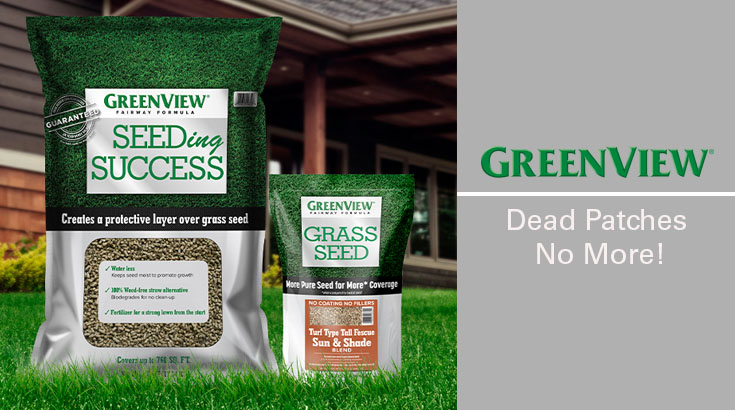
Patchy dead spots can come from all sorts of directions, including fungal diseases such as brown patch and rust, animal digging, grub damage, dog urine and plain, old heat and drought. These conditions leave your yard looking the worse for wear.
Visit GreenView’s Virtual Booth to learn more now!
Grass seed germinates well in the cooler, more damp conditions that surround us in the fall. This allows the young root systems to get off to a good start in soil that’s still reasonably warm for growth. Taking the extra time in September and October to revitalize your grass will have your yard looking fresh and lush, and will have your neighbors asking for lawn advice come spring.
5 Steps to Revitalize Your Grass:
- Clear out any dead, matted turf and other debris. The grass will germinate and root best when it comes into direct contact with soil.
- Loosen the soil. At least scratch the surface, or better yet, dig and loosen the top 2 or 3 inches. If the soil is particularly poor, work in a little compost or similar organic matter. Don’t just toss seed on top of hard ground.
- Scatter grass seed over the loosened soil. Choose good-quality seed that’s geared for your climate, such as Greenview Fairway Formula Grass Seeds. Lightly scratch in the seed so that some of it is incorporated into the top quarter-inch of the soil and some is at or near the surface. Lightly tamp for good seed/soil contact.
- Fertilize. Get new growth off to a good start by scattering a small amount of lawn fertilizer specially formulated for new grass.
- Mulch and water.
Save Time with GreenView Fairway Formula Seeding Success –
GreenView Fairway Formula Seeding Success is a starter fertilizer incorporated into bits of paper mulch. It takes care of the fertilizer and mulching steps at the same time. The paper mulch disintegrates on its own, saving the step of raking once the grass seed germinates.
No matter how you patch, it’s very important to keep the seed bed consistently damp until the seed is up. Dry seeds won’t germinate very well at all, and letting the soil go dry after a new grass plant has broken out of its seed coat may kill it before it has a chance to get going.
In hot, dry weather, you’ll probably need to dampen the surface once or twice a day, unless you’re using GreenView’s Seeding Success – as the product keeps seeds moist longer while they germinate. Once the grass grows to about 2 inches tall, reduce watering to once every few days. Begin mowing when the young grass reaches about 4 inches tall. After one full season, your patched area should be as established as the rest of the lawn. By then, you probably won’t be able to tell the difference… unless those grubs, dogs and fungi decide to pay another visit.